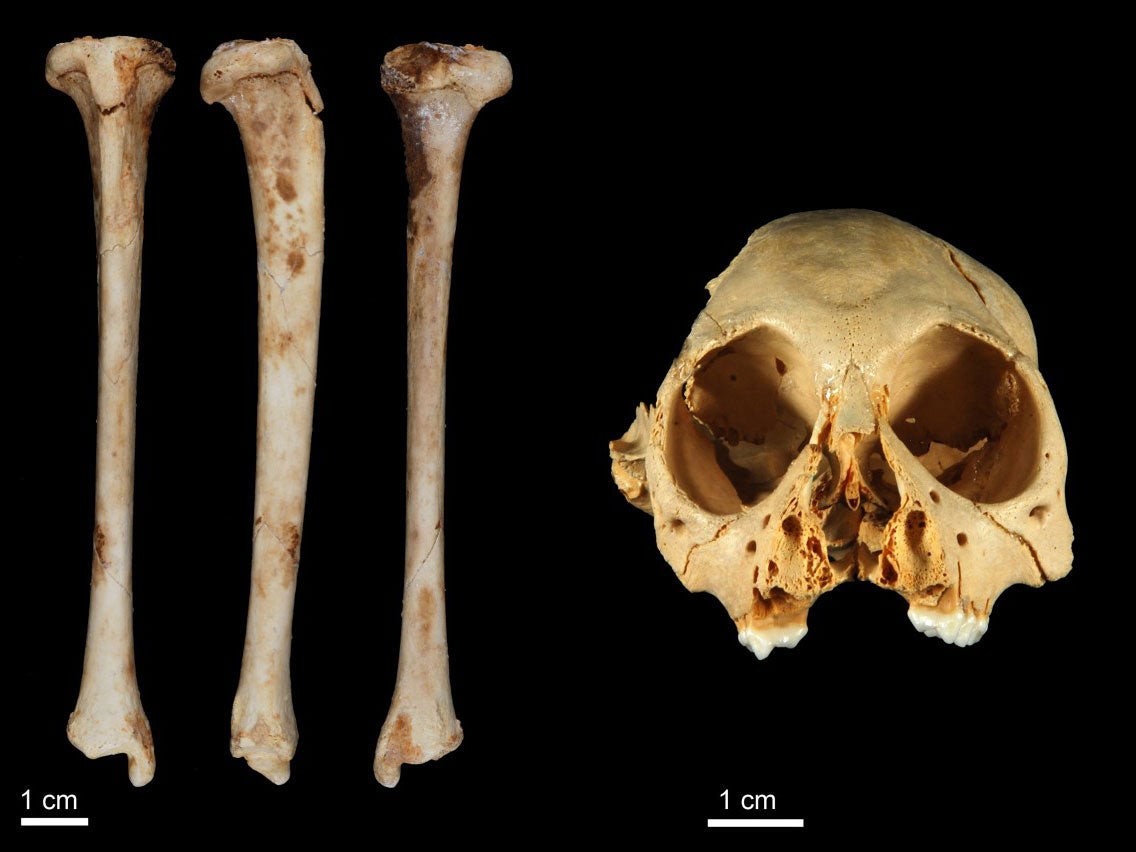Million-year-old monkey fossil found underwater in cave
The species seems to have lived unchanged on an island for at least one million years — before disappearing just as humans arrived

Your support helps us to tell the story
From reproductive rights to climate change to Big Tech, The Independent is on the ground when the story is developing. Whether it's investigating the financials of Elon Musk's pro-Trump PAC or producing our latest documentary, 'The A Word', which shines a light on the American women fighting for reproductive rights, we know how important it is to parse out the facts from the messaging.
At such a critical moment in US history, we need reporters on the ground. Your donation allows us to keep sending journalists to speak to both sides of the story.
The Independent is trusted by Americans across the entire political spectrum. And unlike many other quality news outlets, we choose not to lock Americans out of our reporting and analysis with paywalls. We believe quality journalism should be available to everyone, paid for by those who can afford it.
Your support makes all the difference.Scientists have found a fossil of a monkey in an underwater cave — and estimate it may have been down there for at least a million years.
Researchers hope that the dating process can establish the story of what happened to the primate, known as Antillothrix bernensis, which lived in the Dominican Republic.
The monkey seems to have lived mostly unchanged on the island for at least a million years, according to the findings reported in the Journal of Human Evolution. It then disappeared in the 16th century.
The shin bone, or tibia, was found fossilised in a flooded cave. Scientists were able to date it by studying the different uranium, thorium and lead that were present in the rocks that it was stuck in and looking at the way that they decayed.
It then used extra techniques to establish that the monkey was a Antillothrix bernensis. That primate was about the size of a small cat, lived in trees and ate mostly fruit and leaves.
Finding out when and how those monkeys arrived could be central to figuring out the mystery of how such a wide array of different animals made it into the Caribbean islands. That question has troubled biologists since the days of Darwin, according to the researchers on the new paper.
“The presence of endemic new world monkeys on the Caribbean islands is one the great questions of bio-geography and our work on these fossils shows Antillothrix existed on Hispaniola relatively morphologically unchanged for over a million years” said Helen Green, a lead researcher who works on dating the limestone around the fossils.
“By establishing the age of these fossils we have changed the understanding of primate evolution in this region.”
Now scientists have established the origin and age of the bone, they can also use it to understand more about the animal itself.
For instance, they have created a three-dimensional model of the fossil, allowing them to work out how the primate might have moved and lived, and they will be able to compare that with old and more recent versions of the fossils.
Subscribe to Independent Premium to bookmark this article
Want to bookmark your favourite articles and stories to read or reference later? Start your Independent Premium subscription today.
Join our commenting forum
Join thought-provoking conversations, follow other Independent readers and see their replies
Comments